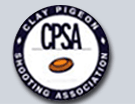Hoton Clay Club
Clay pigeon shooting in the East Midlands
Shotgun gauges/bores explained
What gun am I going to use?
Well, 90% plus of clay shooters will use a 12 gauge shotgun with two barrels mounted on
above the other, it called and over and under! These are the standard and are hard to beat to be honest but you
will see others too.
Some shooters try to reduce the effect of recoil (the thump you get when firing any gun)
by shooting a smaller bore (gauge) gun, typically a 20 gauge. The gun will weigh between 6 and 8 pounds and
have barrels longer than 24 inches (the legal minimum length) and probably no more than 32 inches
long.
There are all sorts of slight differences in the ways guns are made but most guns on
clay grounds will look pretty similar, oh except the semi automatics! These only have one barrel but fire
several round from a magazine or store of cartridges inside the gun. Don't be put off by these guns, they are
perfectly safe and fine on a shooting ground so long as the users conform to the rules.
You may even see some of these guns coloured black or camouflaged! Don't be alarmed,
these are not would be Rambos. These guns are probably also used for shooting rabbits and pigeons as pest
control and are coloured this way to do a special job. Their owners are being responsible by using them to
practice on clays so that when they do shoot vermin and game they do it properly. Semi automatic guns also
generally have lower recoil which many shooters prefer. If you want to try an auto just ask a member and they
will oblige!
Hold on, why is a smaller gun a bigger number?
Well a 12 gauge, or 12 bore, as they used to be called, has a barrel that will just fit a ball of lead made
from 1/12th of a pound of lead. A 20 gauge has a smaller barrel because it would just accommodate 1/20th of a
pound of lead.
I know it doesn't sound right, but the 'gauge' isn't linear. Because it's based on
weight of a sphere it's proportional to the cube of the diameter of the bore so as the diameter decreases in
size the 'gauge' increases to the power
three!
Here is some trivia.
So what 'gauge' would a .410 'bore' actually be?
Well.... a lead ball of .410" diameter would have a volume of:
4/3(pi)r^3 = (4/3) * 3.141 * ((.410/2)*2.54)^3 = 0.591 cm^3
The density of lead is 11.34 g/cm−3
So a lead sphere of diameter .410" weighs 6.71g or 0.0148 lbs
So it would take 1/0.0148 = 67.6 .410 balls to the pound.
So it would be about a 68 gauge!
However, .410 inch (remember the is the actual bore size of a .410) is a 36 gauge, in
standard gun making terms. This is a historical thing, it has been referred as a 36 gauge (I have no idea why),
but it is in fact a 68 gauge. The maths does not lie!
So what gauge would 9mm shotgun be? (Anchutz make a 9mm "Garden Gun" and there are small
caliber guns called Rook Rifles about that aren't actually rifles but small bore shotguns often made from
condemned rifles barrels) a
105 gauge!
And a .22 is a 438 gauge and a .17 is 949 gauge! ( .22 shot shells do
exist!)
Gosh this is getting silly, but not a silly as it might be.
Just in case you ever want to know here are just about all the bore and gauges you could
ever want to know.
Bore(in) Gauge
1.500 1 1.490 1 1.480 1 1.470 1 1.460 1 1.450 2 1.440 2 1.430 2 1.420 2 1.410 2 1.400 2 1.390 2 1.380 2 1.370 2 1.360 2 1.350 2 1.340 2 1.330 2 1.320 2 1.310 2 1.300 2 1.290 2 1.280 2 1.270 2 1.260 2 1.250 2 1.240 2 1.230 3 1.220 3 1.210 3 1.200 3 1.190 3 1.180 3 1.170 3 1.160 3 1.150 3 1.140 3 1.130 3 1.120 3 1.110 3 1.100 4 1.090 4 1.080 4 1.070 4 1.060 4 1.050 4 1.040 4 1.030 4 1.020 4 1.010 5 1.000 5 0.990 5 0.980 5 0.970 5 0.960 5 0.950 5 0.940 6 0.930 6 0.920 6 0.910 6 0.900 6 0.890 7 0.880 7 0.870 7 0.860 7 0.850 8 0.840 8 0.830 8 0.820 8 0.810 9 0.800 9 0.790 9 0.780 10 0.770 10 0.760 11 0.750 11 0.740 12 0.730 12 0.720 12 0.710 13 0.700 14 0.690 14 0.680 15 0.670 16 0.660 16 0.650 17 0.640 18 * I saw 18 AND 19 Gauge guns in the Queens collection 0.630 19 at Sandringham! Just wanted to name drop that. 0.620 20 0.610 21 0.600 22 0.590 23 0.580 24 0.570 25 0.560 27 0.550 28 0.540 30 0.530 31 0.520 33 0.510 35 0.500 37 0.490 40 0.480 42 0.470 45 0.460 48 0.450 51 0.440 55 0.430 59 0.420 63 0.410 68 0.400 73 0.390 79 0.380 85 0.370 92 0.360 100 0.350 109 0.340 119 0.330 130 0.320 142 0.310 156 0.300 173 0.290 191 0.280 212 0.270 237 0.260 265 0.250 298 0.240 337 0.230 383 0.220 438 0.210 503 0.200 583 0.190 680 0.180 799 0.170 949 0.160 1138 0.150 1381 0.140 1699 0.130 2122 0.120 2698 0.110 3503 0.100 4662
And then we get on to Punt Guns!
|
Copywrite© 2021
